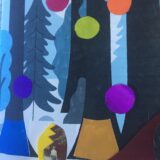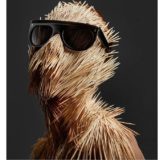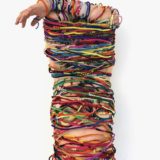“Our world insists on telling simple stories about the complexity of longing. This is the most reductive spin I have for you: Wouldn’t it be hotter just to raze all of this shit and start over? That’s the tension. No course of action implied, no moral imposed. The question is looming there, whether you acknowledge it or not: What else do you want? Kanye is our Gatsby surrounded by an embarrassment of Richie Riches, stricken by a palpable longing for something else. Not less, not more, but other.” Ask Molly by Heather Havrilesky.
Why can this question be so hard or a source of such anxiety?
In Fierce Bad Rabbits, Clare Pollard looks at the cultural history of children’s picture books. For much of their history they were ways of encouraging children to “behave”, as the adults thought was most acceptable. Even the animals were dressed up in clean, trim clothes, and were based on human projections. Then in 1936, The Story of Ferdinand, by Munro Leaf and Robert Lawson told the story of a bull who did not want to compete in a Madrid bullfight, rather he preferred to smell the flowers. It was a surprise hit.
However, Ernest Hemingway was upset enough by the story that he wrote a short story, entitled, The Faithful Bull, that starts: “One time there was a bull whose name was not Ferdinand and he cared nothing for flowers”.
But desire is very specific, which can seem subversive. Bulls are not all the same, neither children, nor dogs. My dog, Rosie likes figs, but not raspberries. She prefers her broccoli cooked al dente, and loves green beans most of all.
In 1969 Eric Carle published The Very Hungry Caterpillar and started by punching holes in the book. Pollard writes, “Hunger is a kind of hole. A nothingness that somehow demands of you. A void that brims with hurting.” I love that even now many picture books have holes and it requires looking out… beyond.
In the Paris Review The Art of Fiction No. 299, interview with Eric Carle he remembers:
“My publisher and I fought bitterly over the stomach-ache scene in The Very Hungry Caterpillar. The caterpillar, you’ll recall feasts on cake, ice cream, salami, pie, cheese, sausage, and so on. After this banquet I intended for him to proceed immediately to his metamorphosis, but my publisher insisted that he suffer an episode of nausea first–that some punishment follow his supposed over-eating. This disgusted me. It ran entirely contrary to the message of the book. The caterpillar is after all, very hungry, as sometimes we all are. He has recognized an immense appetite within him and has indulged it, and the experience transforms him, betters him. Including the punitive stomachache ruined the effect. It compromised the book.”
Often in my psychoanalytic work with people they have reported dreams of brightly colored animals, often “prehistoric” looking, or hybrid creatures not yet known in the waking world. They are running all around, or coming out from under the furniture, and never, ever dressed up in neat tidy clothes. The dreamers are always completely captured by this glorious display but also frightened by “things running all over” or wondering how they will or should bring order to such a scene.
“The point of existence can’t be to hold perfect dominion over your body and rule it with an iron fist, to make every cell bend the knee until you can’t feel a fucking thing. If I start lying about the wildness in my veins, I’ll lose all the sense of what I own.” Ask Molly
Ultimately, it is haphazard and patchwork, but in its most glorious it is like eating a ripe plum with the juices running down our faces and hands.
Havrilesky asks: “What else do you want? Stretch out your arms farther. Fight this current with everything you’ve got.”
Be well,
Marlene
Photo by Rinzi Ruiz, @rinzizen, @rinziruizphotography
Thank you Patty Nowicki, one of the great storytellers, for inspiring this post by gifting me with Fierce Bad Rabbits.
*Please support Independent Bookstores




Maya
I love this Image you create— “it is like eating a ripe plum with the juices running down our faces and hands.” Beautiful.
Marlene Laping
Thank you, Maya! I knew you would be a fan of the plums 🙂